 September 9, 2021 John E. Ross, KD8IDJ, Editor
| ||||||
20th Anniversary of 9/11 ARRL The national association for Amateur Radio® honors the memories of those who died in the terrorist attacks of September 11, 2001, at the World Trade Center, the Pentagon, and in Shanksville, Pennsylvania, including these radio amateurs: Steven A. "Steve" Jacobson, N2SJ, 53, of New York City (WTC); William V. "Bill" Steckman, WA2ACW, 56, of West Hempstead, New York (WTC); Michael G. Jacobs, AA1GO, 54, an ARRL member from Danbury, Connecticut (WTC); Lt. Robert D. "Bob" Cirri, Sr., KA2OTD, 39, an ARRL member from Nutley, New Jersey and Port Authority police officer who was helping to evacuate workers from the building when it collapsed; William R. "Bill" Ruth, W3HRD, 57, of Mt. Airy, Maryland (Pentagon); Gerard J. "Rod" Coppola, KA2KET, 46, of New York City (WTC); and Winston A. Grant, KA2DRF, 59, of West Hempstead, New York (WTC). An assembly of articles, stories, and messages from the November 2001 issue of QST magazine is available at tinyurl.com/ARRL-QST-9-11. Several special events will commemorate the attacks of September 11, 2001, and honor the victims.
Search the Special Events calendar on the ARRL website for more details on these operations. Louisiana ARES Returning to Normal Status in Storm-Affected Parishes Louisiana ARES Section Emergency Coordinator James Coleman, AI5B, said this week that ARRL Amateur Radio Emergency Service® (ARES®) teams in his Section "should now be on normal status, with the affected parishes' status as appropriate for local conditions." Emergency Coordinators in some hard-hit parishes have activated volunteers for relief and recovery operations. More than 30 parishes were affected by the storm, although cell telephone outages in the The Louisiana ARES Emergency Net is now on standby. "If it becomes necessary, the net will be active from 2 PM to 6 PM CDT on 7.255 MHz, and from 6 PM to 10 PM CDT on 3.878 MHz," Coleman's report said. The Louisiana Traffic Net is operating 7 days a week at 6 PM CDT on 3.910 MHz. ARRL Headquarters shipped Ham Aid kits to Louisiana Region 3 for use during recovery efforts. Region 3 District Emergency Coordinator (DEC) Miriam Barrett, KG5BNH, and St. Mary Parish's Emergency Coordinator Jacki Price, KA5LMZ, have coordinated their efforts to assist the Council on Aging in Terrebonne Parish. The Ham Aid kits include equipment for HF, VHF, and UHF, including handheld transceivers and "base-station antennas. The W5RAR VHF repeater (146.805 MHz) was in use over a four-parish area -- La Fourche, St. Charles, St. John, and Terrebonne -- that suffered significant wireless system damage as well as a 911 system outage in St. John Parish. The St. Charles Emergency Operations Center (EOC) was transmitting requests via the Livingston Wide Area Repeater Network (LWARN) 440 MHz linked repeater system to WB5LHS. A communications team in support of Florida Baptist Disaster Relief established operations in a communications trailer at the Metairie Baptist Church. The Jefferson Parish Emergency Operations Center (EOC) with DEC Nick Frederick, W4NDF, and the City of Kenner EOC with Mary Vernoy, WB5IOE, assisting maintained a VHF net. Kenner's fiber optic cable that provided internet was cut by Entergy so it could Gordon Gibby, KX4Z, reported that Metairie was hard-hit, with power outages and boil water notices, although the areas around hospitals have had power restored. "Hams can be a big benefit by partnering with organizations like Florida Baptist and work to meet their specific communications needs," said Gibby, who has connections with the Florida group that drove from Florida to help out. He said hams were embedded within the volunteer organization. A report from Tangipahoa Parish said that as weather conditions deteriorated on August 29 -- the day Hurricane Ida made landfall -- local repeaters lost power and went on battery backup. Two repeaters were lost when a tower collapsed. Formal weather nets were not conducted to conserve power for emergency transmissions only. As of September 6, both the WB5NET and W5TEO repeaters remained on battery backup power and conserving power. Read an expanded version. -- Thanks to Louisiana ARES Section Emergency Coordinator James Coleman, AI5B ARRL Board of Directors Bestows Awards The ARRL Board granted several awards at its July 2021 meeting.
ARRL Podcasts Schedule
The On the Air and Eclectic Tech podcasts are sponsored by Icom. Both podcasts are available on iTunes (iOS) and Stitcher (Android) as well as on Blubrry -- On the Air | Eclectic Tech. GENESIS Satellites among Payloads Lost in Launch Failure The GENESIS-L and GENESIS-N ham radio satellites were among several carrying amateur radio payloads lost following the failure of the Firefly Alpha rocket during its first launch on September 2 from the Vandenberg Space Force Base in California. This was sad news for According to the AMSAT-EA website, the GENESIS satellites were destroyed after the Firefly Alpha vehicle presented an anomaly as it hit a velocity of Mach 1 and reached Max Q, a point of maximum aerodynamic pressure on the vehicle. The launch had been halted a few seconds before takeoff, but the countdown was subsequently resumed. GENESIS-L and GENESIS-N were to conduct a series of telecommunications-related experiments, while a ground-station analysis of the received signals would try to attain Doppler variations in order to perform orbit determination and satellite identification from radio amateur stations around the world. Read an expanded version. August 2021 Volunteer Monitor Program Report The Volunteer Monitor (VM) Program is a joint initiative between ARRL and the Federal Communications Commission (FCC) to enhance compliance in the Amateur Radio Service.
The revised total for VM monitoring in July was 5,746 hours -- the highest number of hours monitored since the inception of the VM Program. The IT staff at ARRL Headquarters completed work on an automated system for Volunteer Monitors to report monthly monitoring hours and Incident Reports. -- Thanks to Riley Hollingsworth, K4ZDH, Volunteer Monitor Program Administrator The Volunteer Monitor (VM) Program is a joint initiative between ARRL and the Federal Communications Commission (FCC) to enhance compliance in the Amateur Radio Service. California Club Assists Animal Rescue Group with Communication Support The El Dorado County Amateur Radio Club (EDCARC) has been providing radio communication support for small and large animal rescue efforts during the Caldor Fire. Members of the South County Large Animal Rescue (SCLAR) group, El Dorado County Animal Services, and other volunteers have been addressing the need. Many of the EDCARC volunteers are also members of the Club's Neighborhood Radio Watch program.
As the California Caldor Fire destroyed the community of Grizzly Flats, threatened Lake Tahoe, and caused evacuations in dozens of communities throughout the county, thousands of area residents were forced to flee their homes without having time to round up their pets and livestock. "We desperately love our animal companions, whether big or small, and being separated and unable to care for them in the midst of a disaster is truly heart-wrenching," said Alan Thompson, W6WN, the club's Public Information Officer. "Because of the mountainous terrain, many of our neighborhoods already had little or no cell or internet communication, and the fire only made things worse." Thompson said the club quickly deployed its Mobile ARRL Amateur Radio Emergency Services (ARES®) Communications Center, maintained by Jay Harmor, KE6GLA, which is in service as central net operations. Several members stepped up, including Dale Dennis, KJ6HHY, from Yolo ARES, and Tom Newman, NN6H, from Alameda County Radio Amateur Civil Emergency Service (RACES®) and part of the Alameda County Sheriff's Communications Team. They volunteered their time and radios to accompany the animal rescue teams dispatched into impacted areas.
Teams of SCLAR members, Animal Services personnel, public employees, and radio communications staff have been conducting daily animal rescue missions and welfare checks throughout the impacted areas. Until residents are permitted to return, these teams are providing food, water, and care to abandoned animals. Thompson said those seeking an animal evacuation or welfare check should contact El Dorado County Animal Services -- western slope, (530) 621-5795 or the shelter at (530) 621-7631. In the South Tahoe area, call (530) 573-7925. SCLAR will respond as directed by El Dorado County Animal Services. They cannot self-deploy or respond directly to phone calls for assistance, Thompson said. Announcements
ARRL Learning Network Webinars Visit the ARRL Learning Network (a members-only benefit) to register, check on upcoming webinars, and to view previously recorded sessions.
Working the Pileup, presented by Ron Delpiere-Smith, KD9IPO / Tuesday, October 5, 2021 @ 1:00 pm EDT (1700 UTC) Ron Delpiere-Smith, KD9IPO, Vice President of the Chicago Suburban Radio Association and an ARRL Assistant Section Manager in Illinois, will offer an enlightening discussion on working a pileup from both sides of the contact. Whether your interest lies in ARRL Field Day, contesting, special events, or rare DX, this is a must-see presentation. Ron will discuss search-and-pounce and running techniques, when to use them, and some tips on working them to your advantage. The ARRL Learning Network schedule is subject to change. Amateur Radio in the News ARRL Public Information Officers, Coordinators, and many other member-volunteers help keep amateur radio and ARRL in the news.
Share any amateur radio media hits you spot with us. Nathaniel Frissell, W2NAF, Awarded $481,260 NASA Research Grant Ham Radio Science Citizen Investigation HamSCI founder Nathaniel Frissell, W2NAF -- an assistant professor in The University of Scranton's Physics and Engineering Department -- has been awarded a $481,260 grant through the NASA Space Weather Applications "This grant includes significant funding for participation of Scranton undergraduate students in this research, as well as support for new computation resources," Frissell said. He explained that the grant will fund "the development of an empirical model for the prediction of traveling ionospheric disturbances (TIDs) in high-frequency radio communications while investigating the geophysical drivers of these disturbances." The grant will cover 2 years of work. Frissell said that the predictive, empirical TID models will be developed using data collected by the Reverse Beacon Network, WSPR, and PSKReporter -- automated, global-scale radio communication observation networks operated by the amateur radio community. Undergraduate students will help the faculty researchers to create algorithms used for the model development.
In 2019, Frissell received a $1.3 million National Science Foundation grant to fund a 3-year initiative to measure modulations produced in the Earth's upper atmosphere. This is Frissell's second NASA grant. Read an expanded version. The K7RA Solar Update Tad Cook, K7RA, Seattle, reports: Sunspot activity increased dramatically this week. Sunspot numbers peaked at 87 on September 8, and on September 7, solar flux was 101.2. Average daily sunspot numbers rose by 14, to 64.6, while average daily solar flux increased from 88 to 92.9. New sunspots appeared on September 2 and 3, and three new sunspot groups arrived on September 4. Another new one appeared on September 8, and on that day the total sunspot area was 1,000 micro-hemispheres.
Predicted solar flux looks quite promising, at 100 on September 9 - 11; 98 on September 12; 95 on September 13 - 16; 85 on September 17 - 18; 88 on September 19 - 23; 90 on September 24 - 28; 88 on September 29 - October 1; 86 on October 2; 90 on October 3 - 6; 92 and 90 on October 7 - 8, and 85 on October 9 - 15. Flux values may rise to 90 again after October 20. Predicted planetary A index is 8 on September 9; 5 on September 10 - 20; 8 on September 21; 5 on September 22 - October 1; 8 on October 2 - 3, and 5 on October 4 - 17. On Sunday September 5, Spaceweather.com reported, "The sudden profusion of so many sunspots is a sign of strength for young Solar Cycle 25. The solar cycle is actually running ahead of schedule. NOAA and NASA predicted that it will peak in the year 2025. Outbreaks like this one support the idea that solar max could come a year early." On September 8, Spaceweather.com reported a shortwave blackout over the Pacific Rim caused by a coronal mass ejection (CME) on September 8 at 1736 UTC. Sunspot numbers for September 2 - 8 were 33, 33, 68, 66, 80, 85, and 87, with a mean of 64.6. The 10.7-centimeter flux was 85.8, 83.8, 86.5, 93.3, 99.5, 101.2, and 100.4, with a mean of 92.9. Estimated planetary A indices were 4, 6, 5, 6, 6, 8, and 14, with a mean of 7. Middle latitude A index was 3, 6, 5, 8, 8, 10, and 14, with a mean of 7.7. A comprehensive K7RA Solar Update is posted Fridays on the ARRL website. For more information concerning radio propagation, visit the ARRL Technical Information Service, read "What the Numbers Mean...," and check out the Propagation Page of Carl Luetzelschwab, K9LA. A propagation bulletin archive is available. For customizable propagation charts, visit the VOACAP Online for Ham Radio website. Share your reports and observations. Just Ahead in Radiosport
For more information, visit the ARRL Contest Calendar. Upcoming ARRL Section, State, and Division Conventions Some conventions and hamfests may have been canceled or postponed due to the coronavirus pandemic. Check the calendar of canceled events on the ARRL website.
Find conventions and hamfests in your area. ARRL -- Your One-Stop Resource for
Subscribe to...
Free of charge to ARRL members...
| ||||||
.jpg) affected area now stand at 3.7% as of September 8 and recovering rapidly. All 911 systems were reported operational as of September 8.
affected area now stand at 3.7% as of September 8 and recovering rapidly. All 911 systems were reported operational as of September 8. access one of its lines for repair. That left "two erratic cellphones and a VHF net" as the only communications Kenner had with Jefferson Parish. Vernoy had to climb onto the roof of the EOC to pick up the 2-meter antenna that had been knocked down by the wind. She was cheered by the arrival of the Baptist team from Florida.
access one of its lines for repair. That left "two erratic cellphones and a VHF net" as the only communications Kenner had with Jefferson Parish. Vernoy had to climb onto the roof of the EOC to pick up the 2-meter antenna that had been knocked down by the wind. She was cheered by the arrival of the Baptist team from Florida..jpg) the author of an article or article series judged to possess the highest degree of technical merit in ARRL periodicals for the past year.
the author of an article or article series judged to possess the highest degree of technical merit in ARRL periodicals for the past year..jpg) The latest episode of the On the Air podcast (Episode 21) features a chat with Steve Goodgame, K5ATA, about the new edition of The ARRL Handbook and how it can be useful to new hams.
The latest episode of the On the Air podcast (Episode 21) features a chat with Steve Goodgame, K5ATA, about the new edition of The ARRL Handbook and how it can be useful to new hams..jpg) The latest edition of Eclectic Tech (Episode 42) features a conversation with ARRL Lab Manager Ed Hare, W1RFI, about the changes to the FCC RF exposure rules.
The latest edition of Eclectic Tech (Episode 42) features a conversation with ARRL Lab Manager Ed Hare, W1RFI, about the changes to the FCC RF exposure rules.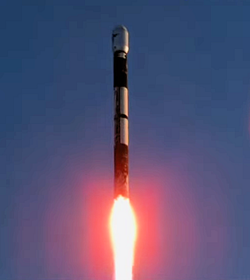 AMSAT-EA (Spain), as GENESIS-L and GENESIS-N were the first satellites they had built themselves.
AMSAT-EA (Spain), as GENESIS-L and GENESIS-N were the first satellites they had built themselves..png) earthquake emergency communications by the International Amateur Radio Union (IARU) Region 2 Emergency Coordinator.
earthquake emergency communications by the International Amateur Radio Union (IARU) Region 2 Emergency Coordinator.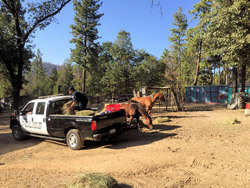
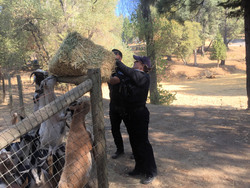
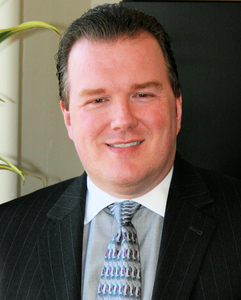 ARRL CEO David Minster, NA2AA, is the banquet speaker at the
ARRL CEO David Minster, NA2AA, is the banquet speaker at the 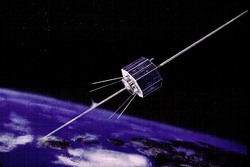 The venerable AO-7 satellite entered a period of full illumination on September 9 that will last until April 11, 2022. While in full illumination, the satellite's 24-hour timer will automatically switch between Mode A (145 MHz up, 29 MHz down) and Mode B (432 MHz up/145 MHz down). The Mode A transponder (145.850 - 145.950 MHz/29.400 - 29.500 MHz down) is non-inverting; the Mode B transponder is inverting. -- Thanks to AMSAT News Service
The venerable AO-7 satellite entered a period of full illumination on September 9 that will last until April 11, 2022. While in full illumination, the satellite's 24-hour timer will automatically switch between Mode A (145 MHz up, 29 MHz down) and Mode B (432 MHz up/145 MHz down). The Mode A transponder (145.850 - 145.950 MHz/29.400 - 29.500 MHz down) is non-inverting; the Mode B transponder is inverting. -- Thanks to AMSAT News Service ARRL members may register for upcoming presentations and view previously recorded
ARRL members may register for upcoming presentations and view previously recorded (1).jpg) Operations Phase II Research Program. Frissell will serve as principal investigator for a research project entitled, "Enabling Space Weather Research with Global Scale Amateur Radio Datasets." He'll collaborate with Philip Erickson, W1PJE, of the Massachusetts Institute of Technology Haystack Observatory and Bill Engelke, AB4EJ, at the University of Alabama.
Operations Phase II Research Program. Frissell will serve as principal investigator for a research project entitled, "Enabling Space Weather Research with Global Scale Amateur Radio Datasets." He'll collaborate with Philip Erickson, W1PJE, of the Massachusetts Institute of Technology Haystack Observatory and Bill Engelke, AB4EJ, at the University of Alabama.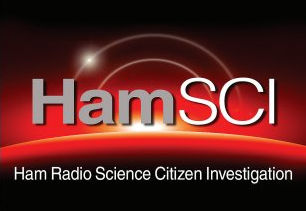 This new NASA award complements a 5-year National Science Foundation grant of more than $616,000 that Frissell received in 2020. That investigation aims to understand the source of TIDs observed in amateur radio and other scientific datasets.
This new NASA award complements a 5-year National Science Foundation grant of more than $616,000 that Frissell received in 2020. That investigation aims to understand the source of TIDs observed in amateur radio and other scientific datasets.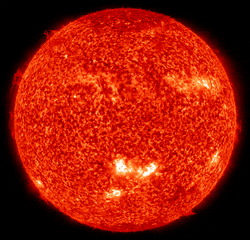 Both the daily planetary and middle latitude A index reached a high of 14 on September 8. The averages were 7 and 7.7, down from 9.6 and 10.7 last week.
Both the daily planetary and middle latitude A index reached a high of 14 on September 8. The averages were 7 and 7.7, down from 9.6 and 10.7 last week.







